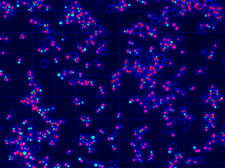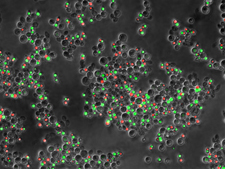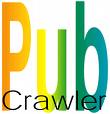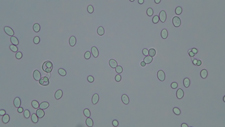| home | research | publications | location |


|
Genome Evolution in Yeast Species
We're interested in the evolution of eukaryotic genome organization, particularly in yeasts. Ken Wolfe is best known for discovering that an ancestor of the yeast Saccharomyces cerevisiae underwent whole-genome duplication (WGD) about 100 million years ago, and subsequent discovering ancient WGDs during human and plant evolution.  Our work on yeast evolution over the last 25 years has mostly been computational, but
since moving to UCD in 2013 we have set up a wet-lab and are doing real experiments,
very slowly.
Our work on yeast evolution over the last 25 years has mostly been computational, but
since moving to UCD in 2013 we have set up a wet-lab and are doing real experiments,
very slowly.
We're interested in these areas: Evolution of chromosome structure How do chromosomes change over time? Does the order of genes along a chromosome matter? What happens to centromeres and telomeres when the number of chromosomes changes? Genomics of methylotrophic yeasts Many of the yeasts used in biotechnology, such as Komagataella phaffii (a.k.a. Pichia pastoris), are unusual species called methylotrophs. It was only recently recognized that they are in their own phylogenetic clade, only distantly related to the Saccharomyces and Candida clades. We're interested in developing genomics tools and bioinformatics resources for these economically important yeasts. Hybridization and polyploidy New hybrid species can be formed when members of two different existing species mate. What are the early stages of evolution of these hybrids? When do they start losing duplicated genes? And how do they regain a sexual cycle? Sex lives of yeasts Yeasts are unicellular organisms (they're fungi) but there are three types of yeast cell: MATa haploids can mate with MATα haploids to form MATa/α diploids. The two types of haploid cells can interconvert by a bizarre process: flipping a section of a chromosome around, or cutting and pasting chunks of DNA. This is totally different from most cell differentiation mechanisms. We know a lot about the molecular apparatus for mating-type switching but how it evolved is a mystery we want to solve. Why do we work on yeasts? The baking yeast Saccharomyces cerevisiae is the best-understood organism in the world, and there is still a lot we don't know about it. There are billion-dollar industries that use yeast technology: wine, beer, foods, also pharmaceuticals and biofuels, and there are important pathogenic yeast species such as Candida. For scientists, yeast cells have a lot of the complexity that human cells have, i.e. a nucleus and a few thousand genes (yeasts have 6,000; humans have 20,000), and their genes and chromosomes work in much the same way that human ones do.  Yeast species are great organisms for studying evolution. They're unicellular. They can
reproduce sexually like humans, or asexually like a bacterium. There are thousands of different
species of yeast with a great diversity of genome organization, so a lot of natural evolutionary change
has occurred. There are yeasts that are as different from each other as humans are from jellyfish. We
can do experiments on yeast that you couldn't contemplate with humans. You can grow millions of
them in a test tube overnight so we can make it evolve in the lab, growing it for thousands of
generations and watching the changes that occur. We can knock out genes, or add extra genes, to see
what happens. We can tag chromosomes to watch how they are inherited.
Yeast species are great organisms for studying evolution. They're unicellular. They can
reproduce sexually like humans, or asexually like a bacterium. There are thousands of different
species of yeast with a great diversity of genome organization, so a lot of natural evolutionary change
has occurred. There are yeasts that are as different from each other as humans are from jellyfish. We
can do experiments on yeast that you couldn't contemplate with humans. You can grow millions of
them in a test tube overnight so we can make it evolve in the lab, growing it for thousands of
generations and watching the changes that occur. We can knock out genes, or add extra genes, to see
what happens. We can tag chromosomes to watch how they are inherited.
Yeasts have done some extraordinary things during evolution, and our lab has worked on all these areas:
PubCrawler  Our free service for alerting you about new papers in PubMed (and new DNA sequences in GenBank) relevant to your interests has been running automatically since 1999 and now has over 68,000 users. Thanks, Karsten! See its website at www.pubcrawler.ie.
Our free service for alerting you about new papers in PubMed (and new DNA sequences in GenBank) relevant to your interests has been running automatically since 1999 and now has over 68,000 users. Thanks, Karsten! See its website at www.pubcrawler.ie.
Join us! We run programs. We run gels.  We're a molecular biology lab working on the genetics of weird
yeast species you've never heard of. We're also a bioinformatics
lab working on genome evolution and comparative genomics.
We're a molecular biology lab working on the genetics of weird
yeast species you've never heard of. We're also a bioinformatics
lab working on genome evolution and comparative genomics.
We're always looking for new PhD students and postdocs with either of these backgrounds. Especially if you have:
|
|
© Ken Wolfe 2025 |